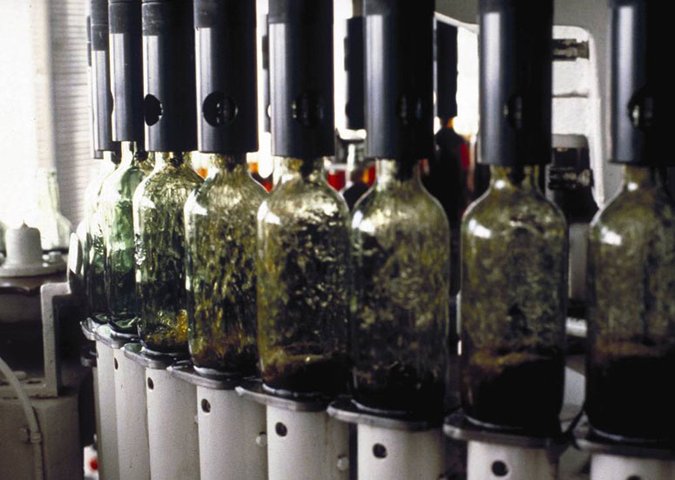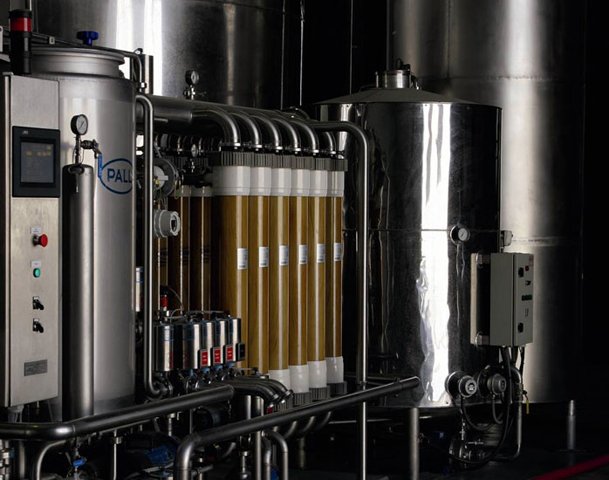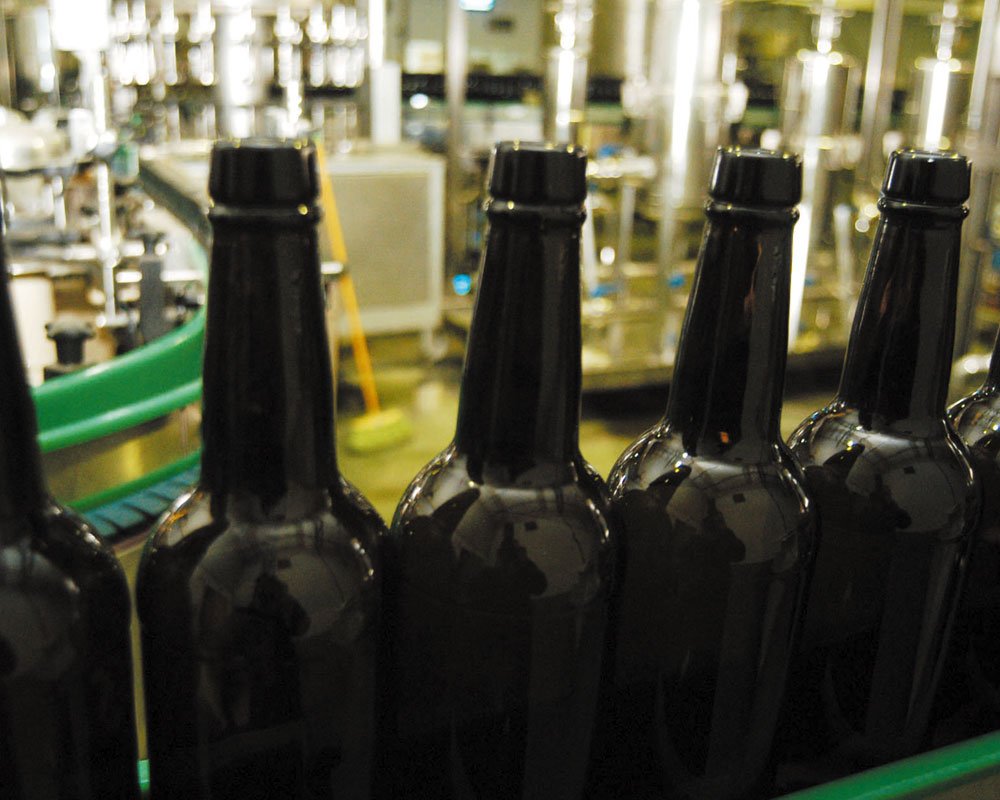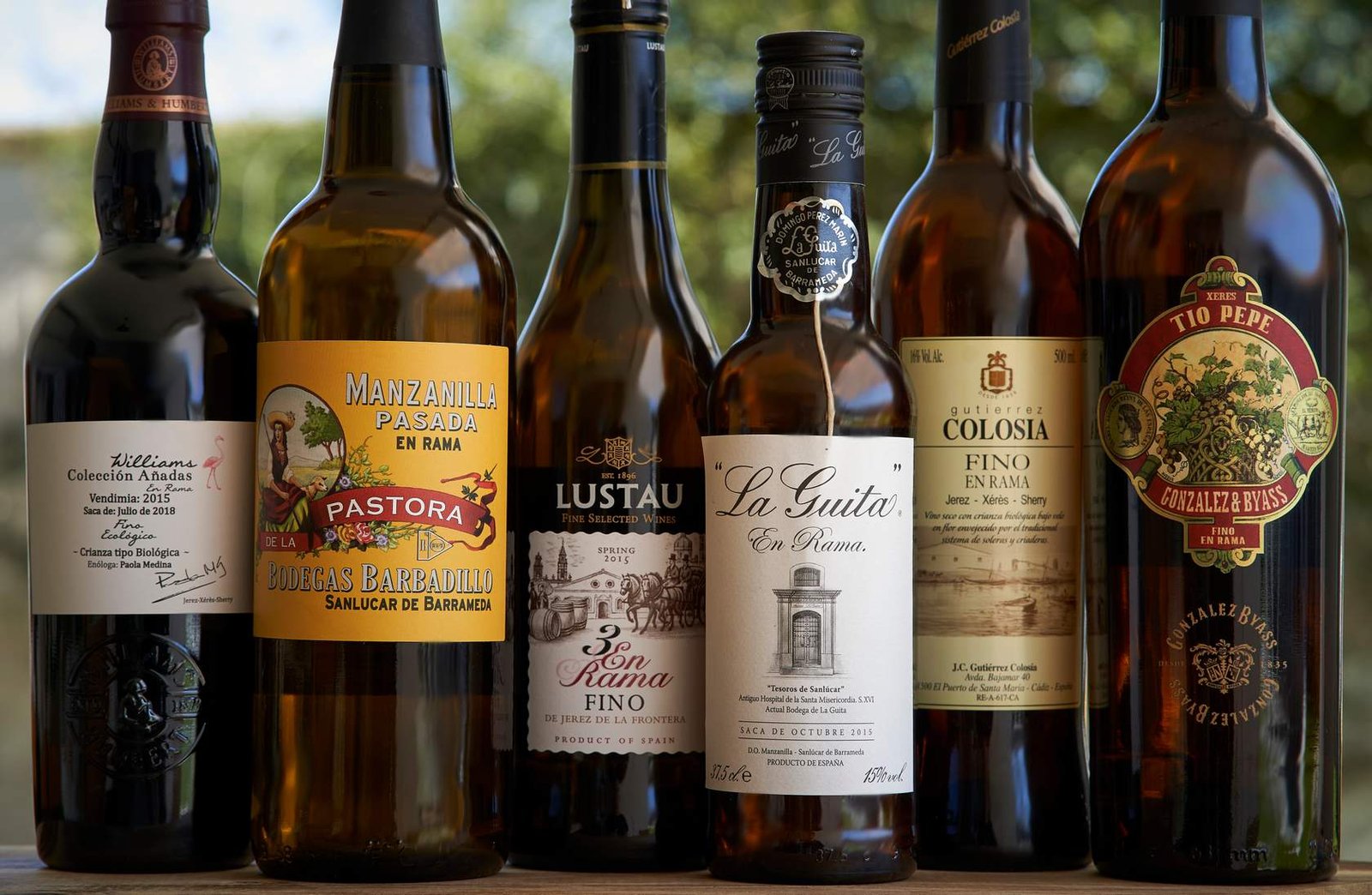
Once the saca has been obtained from the solera, then the wine is ready to be bottled or, where applicable, for fortifying other wines with the aim of producing specific types of sherry wine. It is frequently the case that the blends thus obtained are then returned once more to the wooden casks for a time in order to complete the blending process.
Those wines which are to be directly bottled firstly undergo a process of clarification using bentonite and egg white or gelatine, substances which provoke decantation by dragging down any solid substances in suspension. The clarification process is followed by filtration and, in most cases, cooling treatment. It involves provoking the formation bitartrate crystals which would otherwise form once the wine is in the bottle by submitting it to sharp changes in temperature. Depending upon the alcoholic strength of the wine it is subject for a period of days to temperatures of between -7º and -11º Centigrade. Once cleared of any crystals which have formed and been decanted during the cold treatment the wine is filtered once again and at this point, now totally transparent and gleaming, is ready for bottling.
Bottling techniques employing inert gas are frequently used by sherry firms in order to preserve the organoleptic conditions of the wine for as long as possible and to avoid the effect which the presence of any air within the bottle might have. The process involves the injection of a small quantity of nitrogen into the bottle after filling and before the top is fitted. Any air is displaced by the Nitrogen, which is a totally inert gas heavier than air, thus allowing the bottle to close without the presence of any oxygen in the interior.
The wine is now ready to begin its journey to the consumer.


The bottling of sherries en rama ('on the branch') is increasingly common in the market, although it is a category that still does not have a strict regulatory definition. In a literal sense, a wine 'on the branch' is consumed or bottled directly from the butt, as if it were a fruit tasted straight from the branch of the tree where it grows.
In practice, it is not possible to literally do this, since at the very least a light filtering is necessary before bottling to strain the coarser solids that could be contained in the butt, or, in the case of finos or manzanilla with a filter that prevents the passing of yeast.
With en rama wines, the objective is to transfer the closest possible version of the wine that is found in the solera to the bottle, to approximate the experience of enjoying it directly from the butt.
Depending on the style and age of the wine, there will be greater colour intensity and less clarity in the glass, especially if it has been cooled before consumption:
En rama wines that have not undergone stabilization will evolve more quickly in the bottle. As with any aged wines, they will acquire different notes of complexity that depend on the original qualities of the wine that was bottled.
